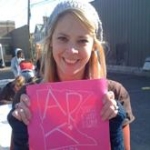
Ms. Laura I. Zabel
Welcome to the Argument in My Head
Posted by Dec 03, 2012

Ms. Laura I. Zabel
 Laura Zabel
Laura Zabel
I believe deeply that the best solutions are local.
The work I admire most is deeply rooted in the community it serves. And it often takes years and years to know a community well enough to provide what it needs, to have the right network to make the work accessible to the people who want it and the cultural intuition to make the work resonate.
And I also believe you can always go deeper and always have more impact.
Springboard for the Arts has been in Minnesota for over 21 years and there is still so much more to do here—more ways we can reach new communities, more partners to work with, more issues to understand.
When it comes to cultural experiences I can’t think of an arts organization that should be worried about market saturation (said another way, I think we’ve got a long way to go before we’re reaching everyone, even in our own backyards). Not to mention the great benefit to remaining organizationally small, nimble, and responsive.
And yet. And yet…I also believe deeply in sharing. I know that by collaborating and sharing models that work, or ideas that inspire, we have the capacity to do much more together than we could ever do each toiling away in our own silos. And so, at Springboard we’ve decided we want both. We are both deepening our local presence AND scaling nationally.
We’ve spent the last two years talking, strategizing, experimenting, and piloting. And we’ve decided it’s not replication we’re after—it’s movement building.
Read More

 Andrew Taylor
Andrew Taylor












